A pinched nerve in the lower back sounds scary. What’s pinching it? Why is sharp pain shooting down your leg? Will the symptoms ever go away?

In this article you’ll learn what causes a pinched nerve in the lower back, the best (scientifically proven) exercises for pain relief, and 7 signs you should see a doctor.
What Does a Pinched Nerve Feel Like?
Symptoms of a pinched nerve in the low back include:
- Low back pain
- Shooting pain into the hip, leg and foot
- Muscle weakness
- Numbness
- Tingling
- Muscle tightness
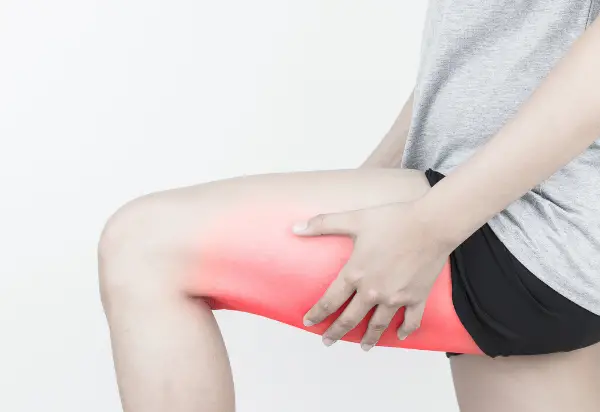
Ever sat on your foot for a few minutes? Or stayed on the toilet too long scrolling through Instagram? Me too. The numbness, tingling, and burning sensation in your leg is how a pinched nerve feels.
Except you can’t walk off a pinched nerve in a couple minutes.
Pinched nerve symptoms are sometimes called sciatica, sciatic pain or sciatic nerve irritation.
Are Pinched Nerves Common?
A pinched nerve in the lower back – the medical term is lumbar radiculopathy – affects 3-5% of adults. It’s most common for adults ages 40 to 70 years old (1).
Will I Need Surgery?
Surgery is rarely required for a pinched nerve. Half of all low back pain cases get better in a week, and 90% resolve in 6-12 months (2).
Surgery is the last resort if medications, physical therapy, and injections fail–it’s reserved for the most severe cases (1). A large study found similar long-term outcomes between patients who had surgery and those who got conservative treatment instead (3).
Pinched Nerve Anatomy
Here’s how a pinched nerve happens:
Nerves exit the spinal cord between the vertebrae of the lumbar spine. Each spinal nerve exits below its respective vertebrae (e.g. L3 nerve exits between L3 and L4).
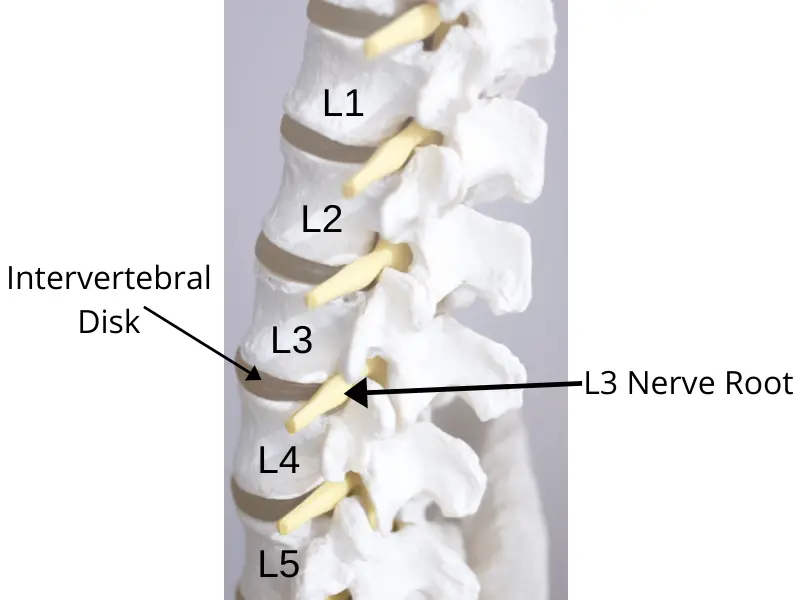
These nerves travel into the legs, providing sensation and strength to the leg muscles. When a nerve is pinched or irritated, strength loss and sensation changes occur.
Anatomically, there are 3 common causes of a pinched nerve in the lower back:
- A disk bulge or herniated disk pinches the nerve
- Bone spurs push on the nerve
- Loss of disk height narrows the nerve’s pathway (known as spinal stenosis)
But before you conclude that your back is a hopeless mess, keep these facts in mind:
- You aren’t your X-ray: Many healthy, pain-free people have spine arthritis, disc bulges and bone spurs (4). And these X-ray findings don’t cause them problems.
- Low back pain usually resolves: Even without treatment, pinched nerves usually heal on their own (2).
- Pain is multifaceted: Exercise, sleep, stress management and healthy nutrition accelerate low back pain recovery, which means you have a lot of routes to relieve pain!
Need to get your nutrition in order? Check out this science-based guide to understanding healthy eating:

Keeping these 3 facts in mind will help you avoid common mistakes when managing low back pain
How Radiating Pain Helps You
The location of your symptoms tells you when you’re making progress. Symptoms travelling further away from your spine (down your leg) means the nerve is more irritated. Pain moving closer to your spine is a positive sign that the nerve is feeling better.
This phenomenon–when pain moves closer to your spine–is called centralization. Patients who experience centralization are 7.8x more likely to feel better in 2 weeks than those who don’t! (5)

Use this information to your advantage–spend less time doing things that send pain down your leg. Instead, find the positions that move the pain towards your spine!
The Best Exercises
Nerve irritation doesn’t respond well to general exercise–at least not initially (6). It’s highly sensitive and requires specific movements and positions to relieve pain. These 7 exercises are scientifically proven to relieve pain from a pinched nerve.
1) Posture Correction
This technique shows you which positions worsen your pain, and which alleviate it. It’s the first step to taking control of your pain.
First, slouch in your seat. Do your leg symptoms change after 30 seconds? Take note of your symptoms.
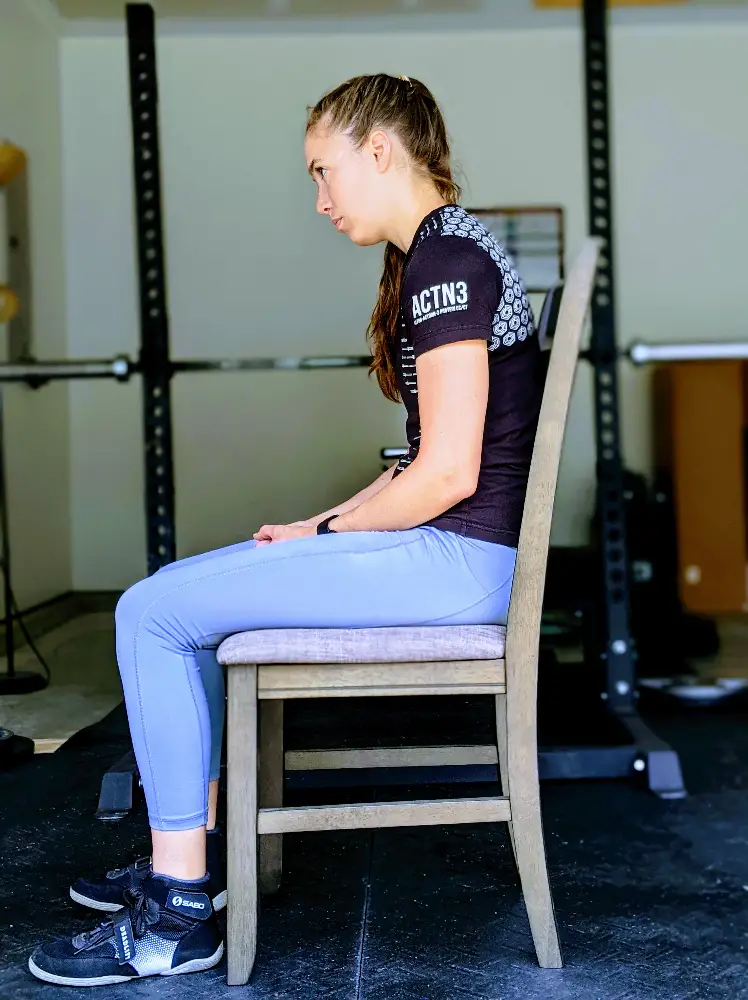
Next, sit tall with perfect posture–really exaggerate it–then back off 20%.
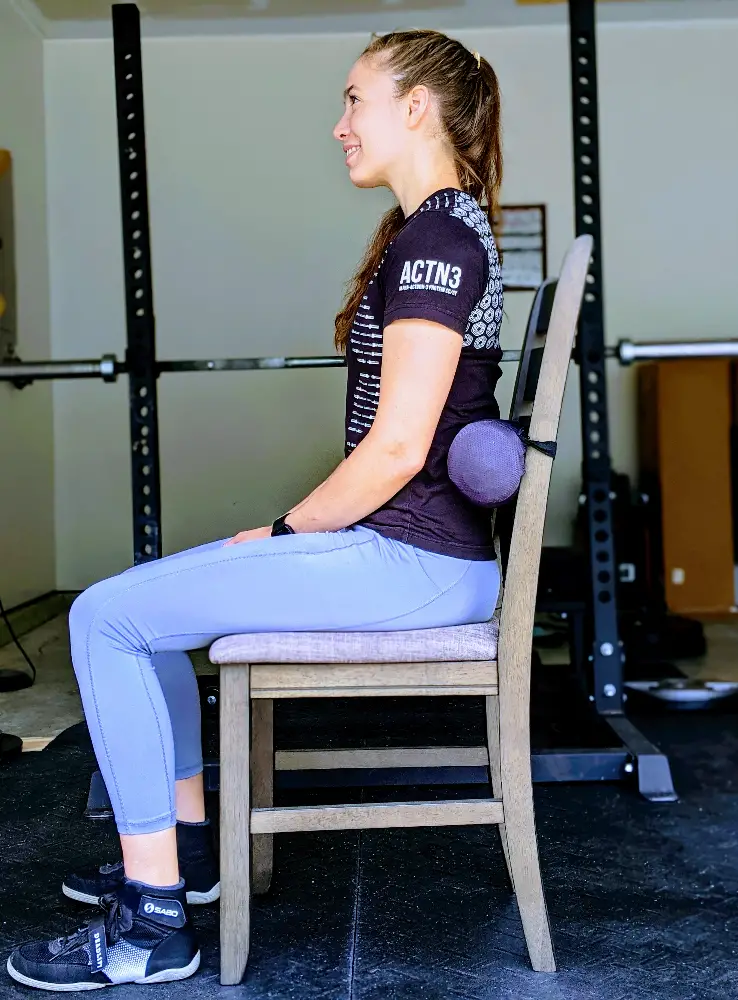
Use a folded towel for lumbar support, or try a lumbar roll. I use this lumbar roll to keep my back happy:

Check your symptoms. Do you feel better with good posture? Consider starting with extension exercises. And sit with a McKenzie lumbar roll.
Repeated Motions
These simple movements eliminate nerve pain for many people. Up to 74% of people with low back pain benefit from these exercises (5).
This group can stretch into one direction for 10-15 repetitions and experience immediate improvements in their symptoms (like less pain and more range of motion). Feeling better after stretching in one direction is called a directional preference.
Extension, or backward bending, is the most common directional preference at 83% (5). The next 3 exercises extend the low back.
2) Prone on Elbows
This is a gentle extension exercise which can relieve even the most severe symptoms.
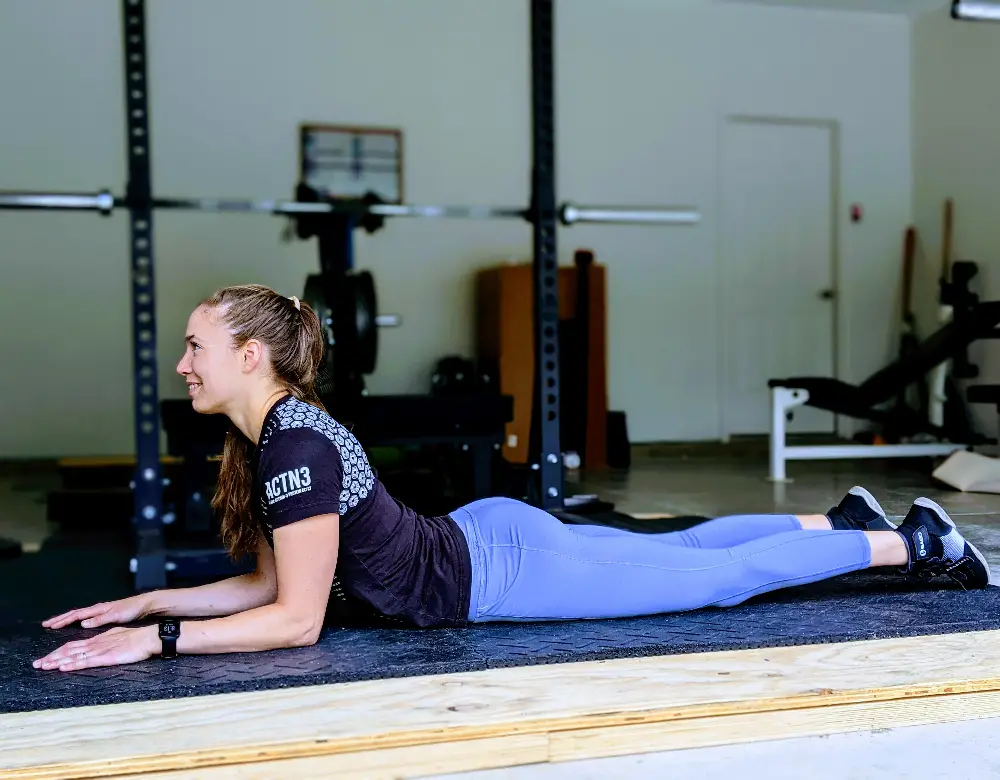
First, lay on your stomach. Then, prop up on your elbows. Hold 10 seconds. Slowly return to lying flat. Repeat 10 times.
Reassess your pain, range of motion or other painful baseline test to see if the exercise helped.
3) Repeated Extension in Lying
Also known as prone press ups, this exercise is the next level once Prone on Elbows feels easy.
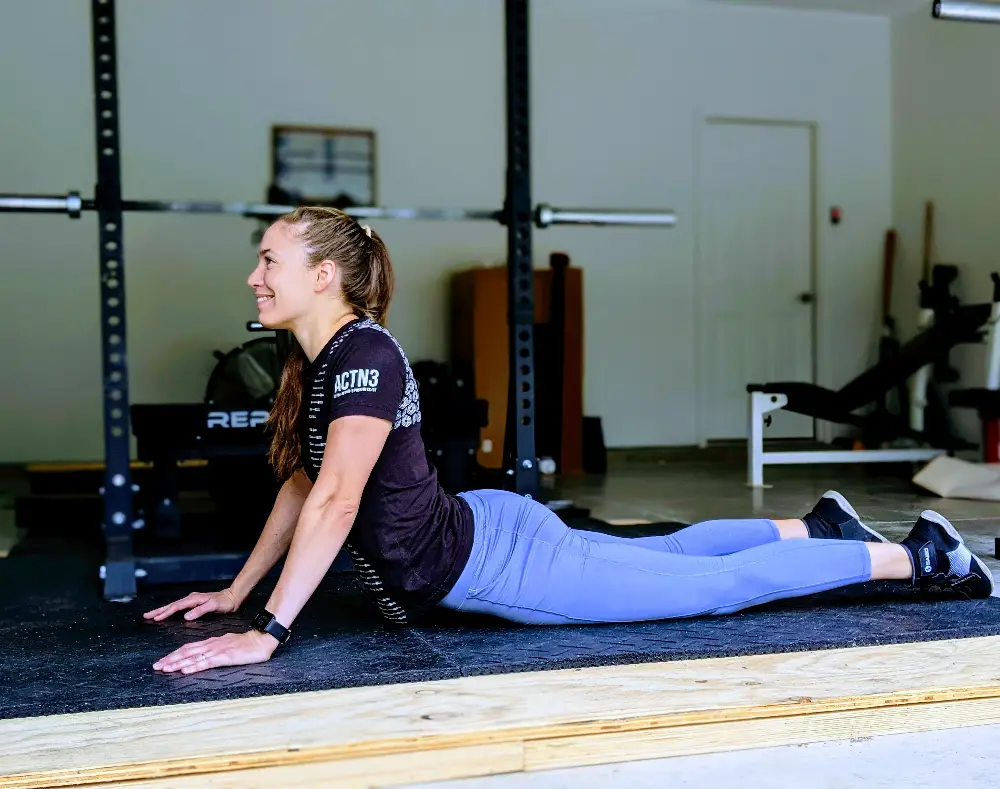
Start on your stomach. Slowly straighten your arms, keeping legs and hips relaxed. Hold 3 seconds, then return to your starting position.
Repeat 10-15 times, then reassess for changes in your symptoms. Mild discomfort is okay during the exercise. Your symptoms afterwards will tell you if you’re making progress (or irritating your back).
4) Repeated Extension in Standing
If exercises #2 and #3 help you, try this one as an on-the-go option.
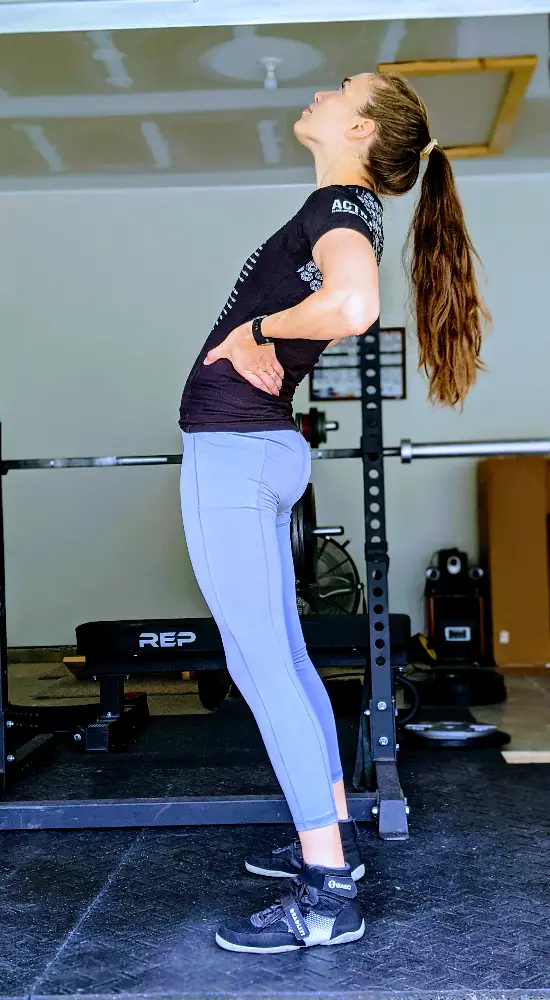
Stand tall and place your hands on the lower back for support. Soften the knees and bend backwards until you feel a stretch in your low back. Hold 3 seconds before returning to the starting position.
Pro Tip: Many patients don’t benefit from repeated movements because they don’t do them enough. Less than 30 repetitions per day isn’t enough. At least 40-60 reps per day (spread out, not all at once) is the sweet spot for most people.
If repeated extensions don’t reduce or centralize your leg symptoms, other directional preference exercises may provide relief.
5) Side Glides in Standing
If extensions don’t work, side glides may do the trick. It’s the 2nd most common directional preference at 10% (5). These can help you if your pain is on one side of the back and both sitting and standing irritate your nerve pain.

Move your hips away from the painful side only. The exercise shown here is treating left-sided pain. Keep the hips and shoulders facing forward throughout the exercise (don’t let them rotate).
6) Repeated Flexion in Lying
Flexion exercises help 7% of people with a directional preference. Older adults benefit from flexion more often than younger people, though I’ve worked with a handful of flexion-responders in their 20s.
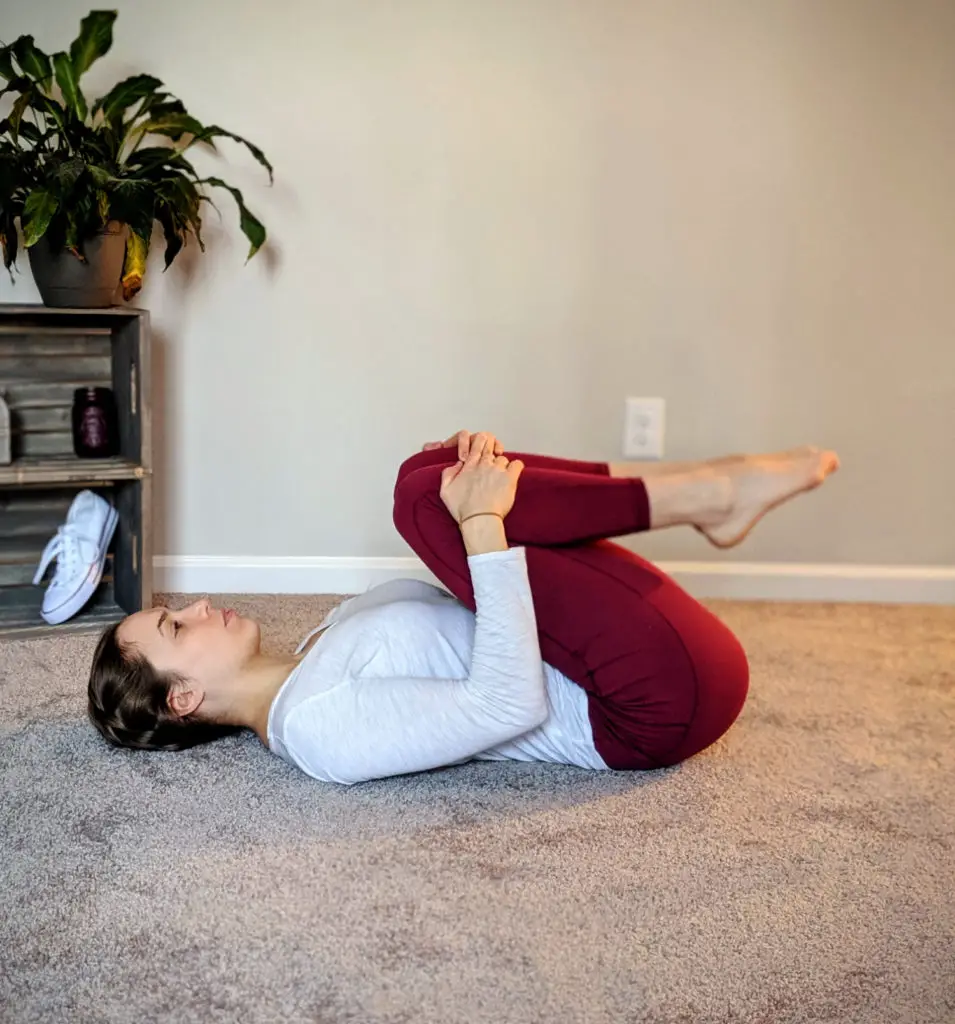
Lay on your back and gently pull your knees towards your chest. Hold 3 seconds. Repeat 10-15 times.
To learn how repeated motions can fix a pinched nerve, check out Treat Your Own Back. It’s a best-selling book that has empowered thousands of people to overcome back pain (including me!).

7) Nerve Glides
Nerve glides, also called neurodynamics, gently floss and stretch the irritated nerve to reduce sensitivity, pain and swelling (7). Nerve mobilization for a pinched nerve in the low back is a proven to reduce pain (5).
There are two types of nerve mobilization exercises. Both techniques shown here target the sciatic nerve.
Nerve Sliders
Nerve sliders floss the nerve back and forth without stretching the nerve. Think of flossing your teeth – the floss moves back and forth without stretching. Nerve sliders are like that.
When performed correctly, the patient feels nothing – no stretching, pain, or changes in symptoms during the exercise. Nerve sliders work best for irritable nerves.
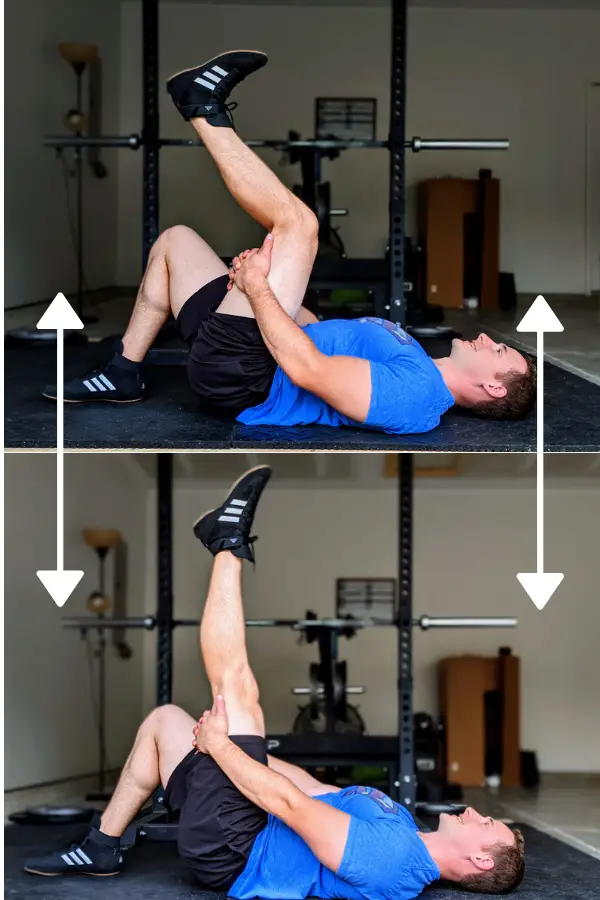
Lie on your back, holding behind your painful leg. Start with the knee bent and toes pulled up. Point the toes down as you straighten the knee. This stretches the nerve at the knee but slackens it at the ankle. Return to starting position, where the nerve is stretched at the ankle but slackened at the knee.
Repeat 10-15 times. Don’t expect immediate changes after this exercise. It can take several days of nerve glides to feel pain relief.
Nerve Tensioners
Nerve tensioners gently stretch the affected nerve. Think of lightly stretching a rubber band from both ends. Because nerve tensioners lengthen the nerve, they’re more aggressive than sliders.
They can aggravate your leg symptoms if done too aggressively. The “no pain, no gain” mantra doesn’t apply to this situation!

Lay on your back, holding behind the painful leg. Start with the knee bent and toes pointed down. This slackens the sciatic nerve at the knee and ankle. Then, straighten the knee and pull the toes up to stretch the nerve at both joints. You should feel a moderate stretch (ease off the stretch if you feel more than mild discomfort). Return to the starting position.
Repeat 10-15 times, 2x per day.
Traction
Manual traction (done by your physical therapist) or mechanical traction (done by a machine) are common treatments for low back pain. Too common. Both forms of traction gently lengthen the spine, the opposite of compression. It’s also called decompression (not to be confused with lumbar decompression surgery, which is entirely different).
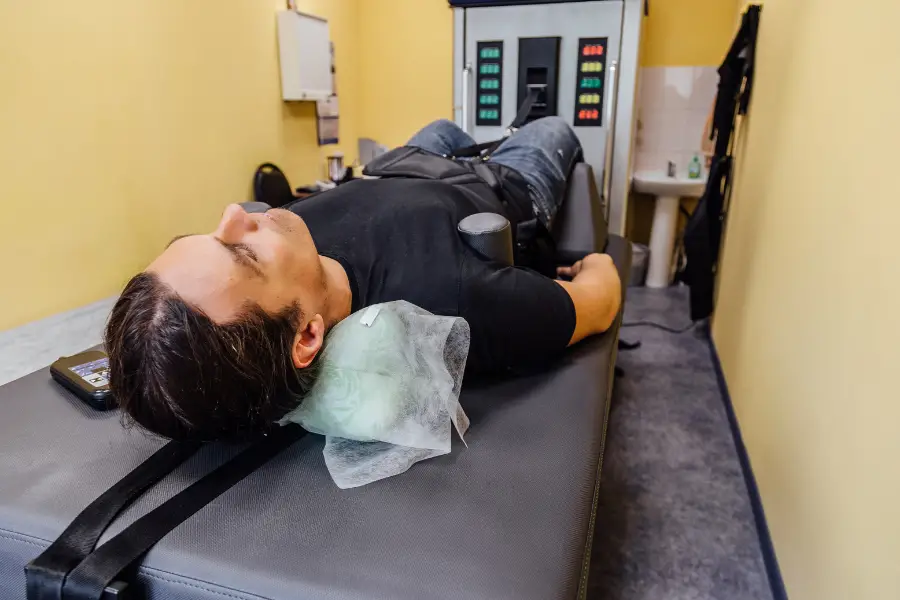
Traction is only recommended in a few cases. The research is conflicting on whether traction works for pinched nerves. It may help a small subsection of people with pinched nerves–when repeated motions worsen leg symptoms (5).
Traction should not be used for non-radiating low back pain, like it was for me in my college golf days (5).
7 Signs You Need Medical Attention
I don’t recommend DIY nerve pain management. Get a trained professional on your side – working with a skilled physical therapist will fast-track your recovery. Plus, your PT is trained to know if you need to see a spine specialist.
“Red Flag” symptoms indicate there might be a serious medical condition. They warrant prompt medical attention.

Red Flags include:
- Changes in bowel or bladder function
- Changes in sensation in the saddle (groin) area
- Impaired coordination with walking (ataxia)
- Fever
- Unexplained weight loss
- Numbness/tingling in both legs
- Recent trauma (car accident, fall, etc.)
Talk to your doctor right away if you have any of these symptoms.
Summary
Fortunately, low back pain isn’t a serious medical problem in 99.1% of cases (5). And pinched nerves are common, too. They usually resolve without surgery or further complications.
As always, this article isn’t medical advice–it’s simply to help you understand this condition. Talk to your local physical therapist about setting up a treatment plan to get you feeling better!
Physical therapy is one of the best ways to relieve pain from a pinched nerve in your lower back. The best conservative treatments are repeated motions, manual therapy, nerve mobilization, traction (sometimes) and patient education (5).
If sitting worsens your pain, learn 5 ways to sit with less pain
Readers: How have you dealt with lower back pain? Share what’s worked for you, and what hasn’t, in the comments below.
For more rehab insights you won’t find anywhere else, join the free, fast-growing Facts & Physio Newsletter. Plus, get The Recovery Checklist when you sign up.

